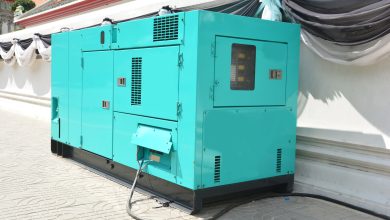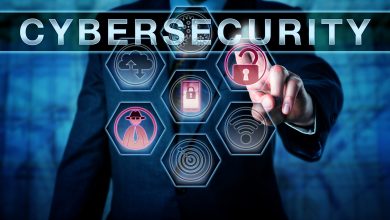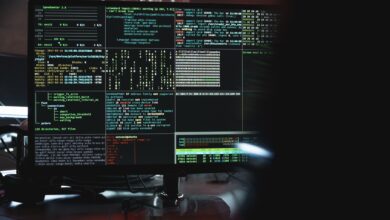Are UV Sanitizers Safe?

The Covid-19 pandemic has renewed interest in UV sterilization and disinfection technology. Businesses and institutions are looking for ways to keep employees and customers healthy and safe. You may have heard of UV sanitizers and how they can eliminate viruses and bacteria, but are they safe?
Table of Contents
Are UV Sanitizers Safe?
Manufacturers of UV sanitizers note that the products can remove up to 99% of germs in minutes. According to the FDA, UV lights and lamps can eliminate harmful bacteria and germs on surfaces with minimal risks. They can disinfect high-touch products, such as keys, wallets, and cell phones.
UV products can contain harmful elements, so safety and health protocols must be taken.
Also check
What Is UV Radiation?
UV radiation is electromagnetic radiation produced by artificial sources and the sun. Sunlight is the common form of UV radiation that emits three UV rays: UVC, UVB, and UVA. UVC is the highest-energy radiation, and it’s used in making UV lights and lamps.
UVC radiation is known to disinfect non-porous surfaces, water, and air. Recent scientific research indicates that UVC radiation safely and effectively inactivates airborne human viruses.
How UV Sanitizers Work
UV rays have been used for decades to disinfect surfaces. Hospitals, learning institutions, and businesses rely on them to sterilize surfaces. The energy emitted from industrial ultra violet sanitizers is effective against most fungi, viruses, and bacteria.
Ultra violet sanitizers remove bacteria and other microbes by using UV rays. The radiation targets genetic material and proteins and inhibits them from participating in healthy replications. UV products are manufactured to disinfect an array of surfaces.
You should note that UV lights shouldn’t be used on your skin. Improper installation of UV lights and lamps in places accessible to humans can cause eye and skin burns. The sanitizers are available in different types, from zip-up pouches to wands.
The Safety Level of UV Sanitizer
Ultraviolet radiation is never safe for people, especially for extended or repeated exposure. The powerful energy source is deadly to viruses and bacteria. UVA and UVB are considered hazardous and can lead to skin cancer. The UV index scale shows that even the lowest UV reading is still dangerous.
The UVC light in UV disinfectant doesn’t hurt human skin. The strong germicidal properties make it less dangerous out of the three rays. UV light sterilization and disinfection technology is well-documented to eliminate bacteria effectively.
Uses of UV Sanitizers
Keeping employees and customers healthy and safe is the most significant investment. UV disinfectants can help maintain the safety of your building. Here are six ways a spectrum of facilities can use UV sterilizers:
Water Disinfection
Public schools and universities are among the high-water consuming facilities. Because UV sterilization doesn’t require adding chemicals to water for purification, this is a safe and effective option. The sanitizers can reduce the occurrence of parasites, such as giardia, which are chemical resistant. The best thing with UV sterilization is that you can treat millions of gallons of water.
UV disinfection technology is used in wastewater treatment. While UV radiation is not the sole disinfection production, it has become a common solution in metropolitan areas.
Equipment Sterilization
UV sanitizers are popular in disinfecting and sterilizing equipment. Unlike bleaching or washing, which can leave moisture and residue, UV light dries equipment effectively. Places such as laboratories are at a high risk of getting contaminated. UV light is be ideal for disinfecting glassware, goggles, and other lab instruments.
Food and Beverage Disinfection
The high-efficiency UV sanitizers use radiation to destroy the DNA of microorganisms in food and beverage. A reliable product takes about 20 – 60 seconds to eliminate up to 99% of viruses and bacteria, including salmonella, influenza, spores, and allergens.
The ultraviolet rays have strong destructive power to eliminate microbes in food. UV light hinders the replication of viruses and protein synthesis, leading to bacterial cell death. The food manufacturing facilities can use sanitizers to disinfect conveyor belts.
Air Disinfection
Whether it is the work office, doctor’s office, or learning facility, UV sanitizers efficiently disinfect air spaces. Most facilities install UV lights on the upper room levels for enhanced efficacy. Facilities can install UV lamps near drain pans and coils of refrigerators and air conditioners.
Surface Disinfection
It’s not a surprise that UV lamps can be used to disinfect surfaces in offices and healthcare facilities. Ultraviolet rays can destroy active pathogens in a matter of seconds. Due to such effectiveness, UV in learning institutions and medical offices is a great solution to difficult germs.
Disinfect Your Facilities Safely With UV Sanitizers
UV light technology is proven to be safe and effective. The technology can improve the client experience while making the working spaces safer for learners, staff, patients, and customers. Consider incorporating UV sanitizers into your facility from experts for safe installation and utilization.





